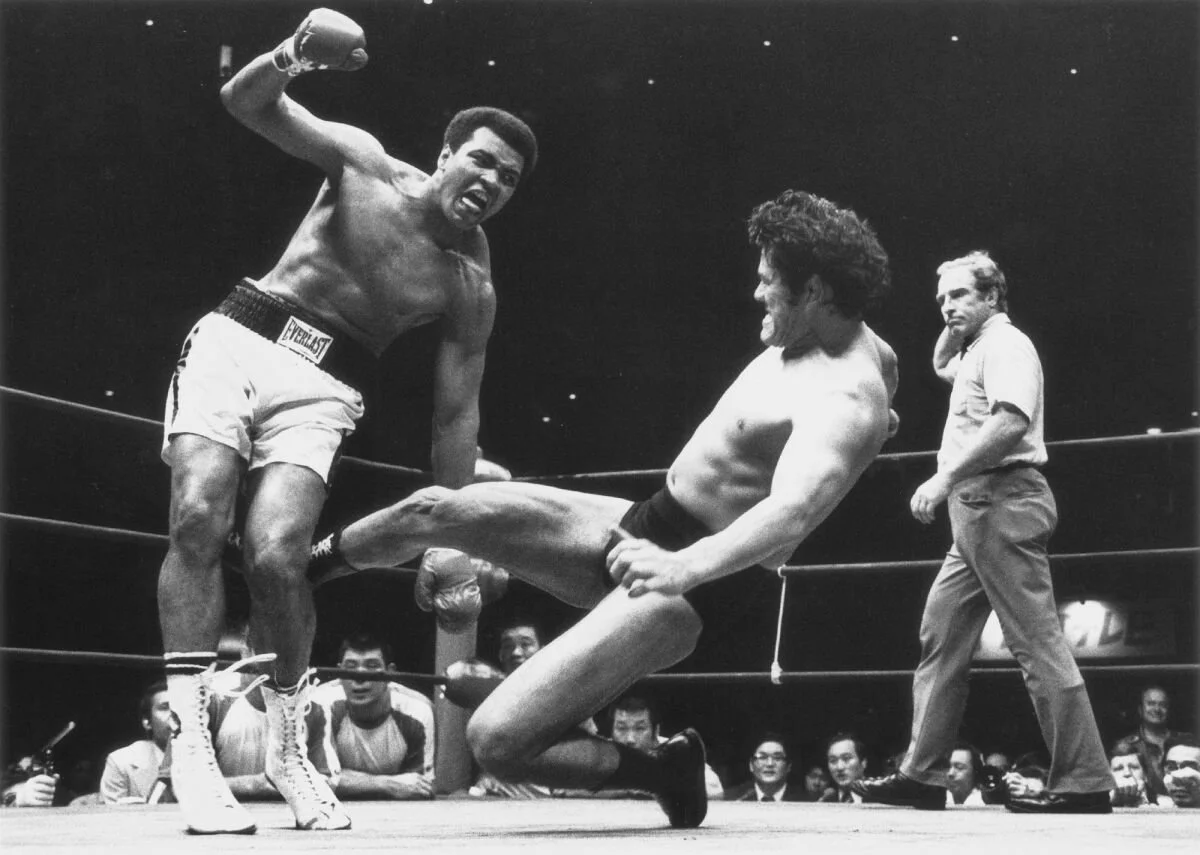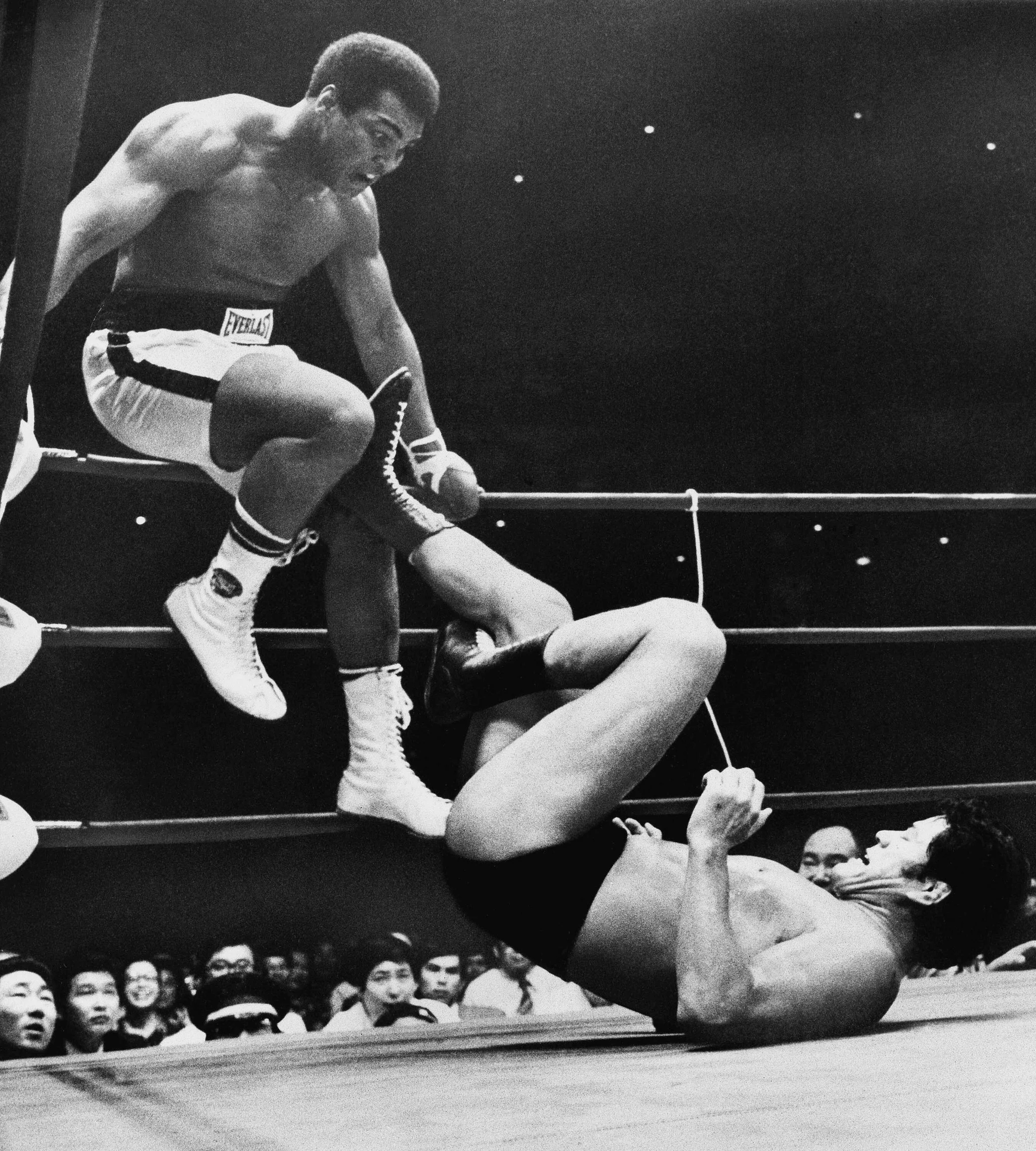FEATURED ARTICLE
HOLLY HUMPHREY
Ali vs. Inoki: The 1976 Fight That Shouldn’t Have Happened
THE SCORECARD / ALI VS INOKI: THE 1976 FIGHT THAT SHOULDN’T HAVE HAPPENED
On 26 June 1976, the Budokan in Tokyo staged a contest that defied both logic and tradition. Muhammad Ali, the reigning heavyweight boxing champion, faced Antonio Inoki, Japan’s most prominent professional wrestler. The encounter was promoted as a definitive answer to a perennial sporting question, which discipline was superior, boxing or wrestling? But instead it produced one of the most infamous spectacles in the history of combat sports. Far from settling the debate, the fight left behind confusion, disappointment, and in Ali’s case, lasting physical damage.
The mid-1970s represented the pinnacle of Muhammad Ali’s career. Having reclaimed the heavyweight crown from George Foreman in 1947 in the celebrated “Rumble in the Jungle”, Ali had become not only a world champion but a global symbol of charisma and athletic brilliance. His “strong style” sought to give scripted contests the appearance and sometimes the substance of real combat, and Inoki himself aspired to legitimise wrestling through contests with authentic fighters. The Ali-Inoki encounter thus emerged from more than commercial opportunism. It reflected deeper cultural impulses: East versus West, spectacle versus sport and a genuine curiosity about the boundaries of combat disciplines. Yet this ambition collided with another reality, the difficulty of designing rules that allowed a boxer and a wrestler to meet on equal terms.
Initially conceived as a staged exhibition with a predetermined outcome, the fight quickly became mired in dispute. Ali and his camp, wary of damaging his reputation, rejected a scripted conclusion. The result was a fragile compromise that pleased no one. Inoki was forbidden to use throws, holds or standard wrestling techniques, and could only kick if one knee remained on the canvas. Ali, in turn, was restricted to traditional boxing. This arrangement all but guaranteed a stalemate. Over fifteen rounds, Inoki spent the majority of the fight lying on his back, lashing out with leg kicks. He landed over a hundred blows to Ali’s thighs and calves, while Ali managed just a handful of punches, none decisive. The spectacle produced neither a knockout nor a clear victor, ending in a draw that satisfied no audience.
The consequences for Ali were not confined to embarrassment. Repeatedly struck in the legs, he suffered severe swelling and blood clots that required hospitalisation. Though he continued boxing until 1981, observers noted a marked decline in his mobility. The fluid footwork and the famous “Ali shuffle” slowed, and his ability to evade punches with movement was compromised. In retrospect, the Inoki fight may be seen not merely as an oddity in his career, but as the beginning of his physical decline.
The 1976 Ali-Inoki fight was less a contest than a cultural collision. It promised a historic encounter between two icons of the respective sports, yet delivered an event remembered for frustration and anti-climax. Nevertheless, its significance lies not only in its failure but in what it revealed: the challenges of merging disparate combat traditions, the fragility of reputation in global sport and the unforeseen costs of spectacle. It remains a cautionary tale within Ali’s otherwise glittering career and a reminder that not every fight, however grand its billing, is worth the risk.


